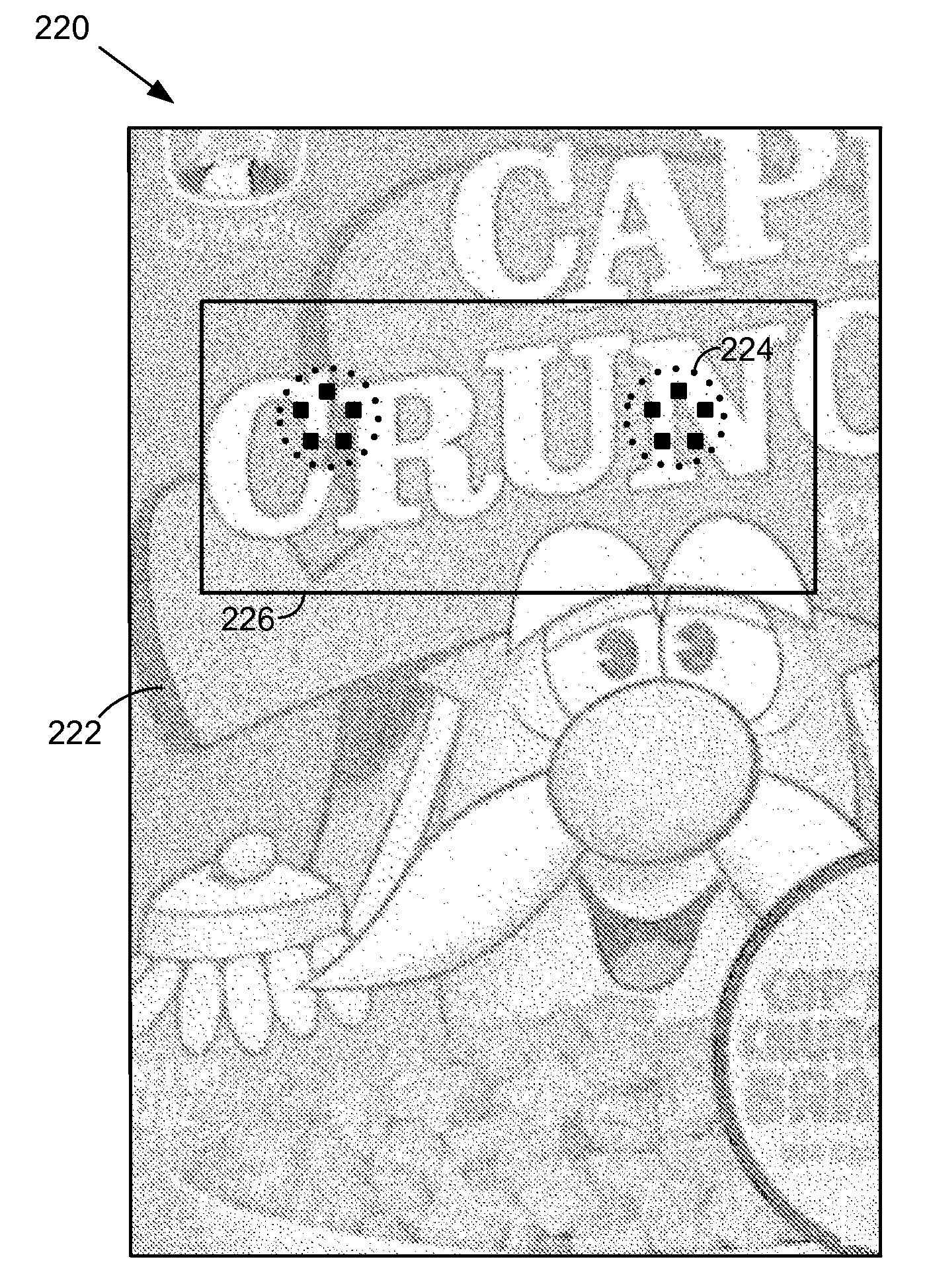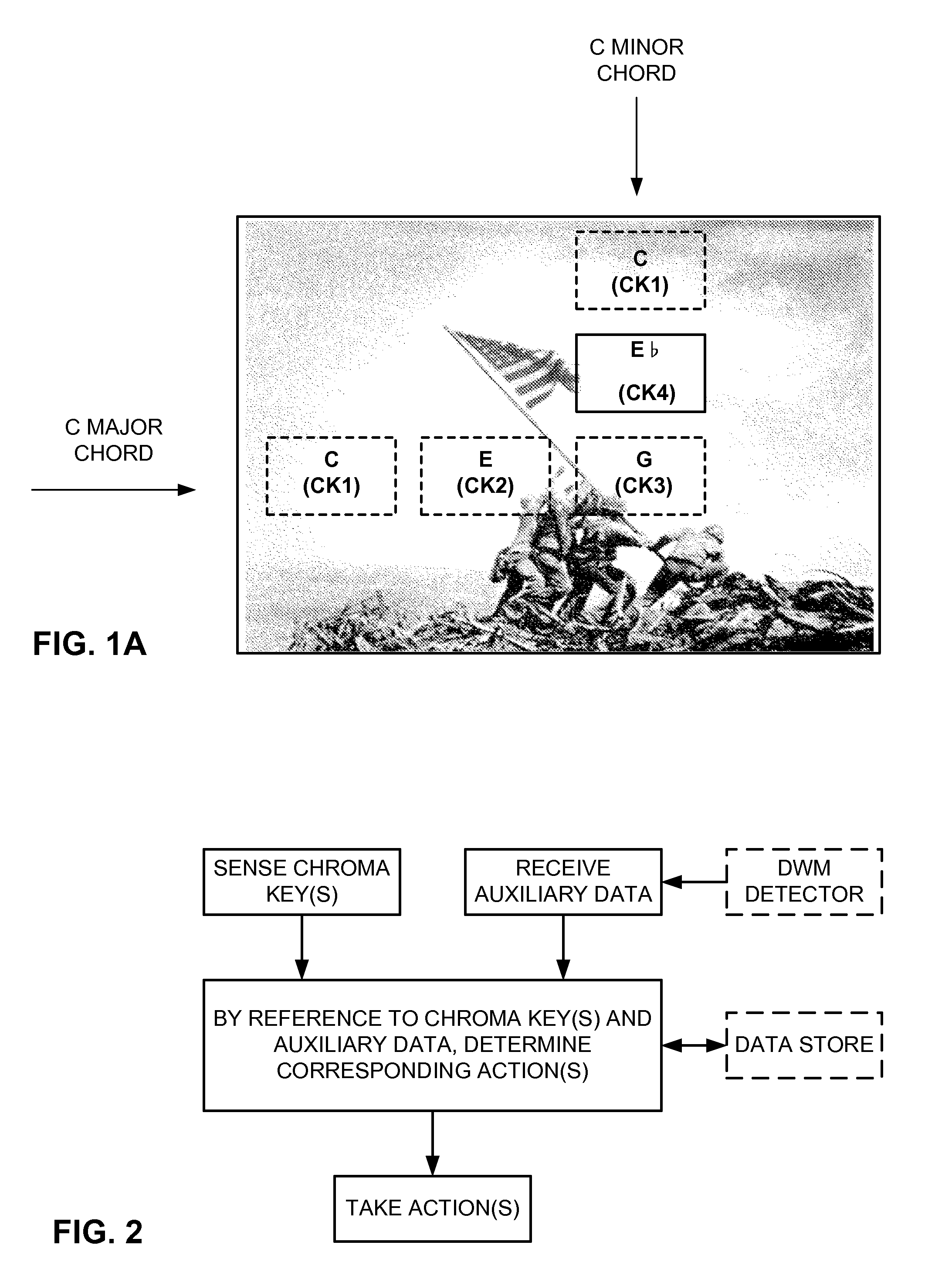Methods and arrangements employing mixed-domain displays
a display and mixed-domain technology, applied in the field of smart phone interaction, can solve the problems of unrecognized decoding algorithm, confusion of consumers, and unsuitable perspective for magazine pages, and may be sufficiently distorted by the perspective viewing angle that the decoding algorithm cannot recognize,
- Summary
- Abstract
- Description
- Claims
- Application Information
AI Technical Summary
Benefits of technology
Problems solved by technology
Method used
Image
Examples
Embodiment Construction
[0027]As shown in FIG. 1, an image 10 is encoded in accordance with one aspect of the technology to define one or more regions (CK1, CK2, etc.) that can be sensed by a suitably-equipped mobile device (e.g., a smartphone / cell phone), but are imperceptible to humans. When such a mobile device senses one of these regions, it takes an action in response.
[0028]The content of image 10 can be arbitrary. Details (except the hidden regions) are not shown for clarity of illustration.
[0029]The regions can be of any shape; only a few are illustrated. As indicated, they may overlap in layered fashion. Each region has a key associated with it (e.g., CK1, CK2, etc.). Because the preferred embodiment employs a chrominance-based embedding arrangement, these keys may be termed chroma keys. However, other embedding arrangements can alternatively be used.
[0030](“YB” in the drawing title refers to Yellow-Blue. “Dome” refers to an arc-shaped area in Fourier-space in which the keys are manifested, as deta...
PUM
 Login to View More
Login to View More Abstract
Description
Claims
Application Information
 Login to View More
Login to View More - R&D
- Intellectual Property
- Life Sciences
- Materials
- Tech Scout
- Unparalleled Data Quality
- Higher Quality Content
- 60% Fewer Hallucinations
Browse by: Latest US Patents, China's latest patents, Technical Efficacy Thesaurus, Application Domain, Technology Topic, Popular Technical Reports.
© 2025 PatSnap. All rights reserved.Legal|Privacy policy|Modern Slavery Act Transparency Statement|Sitemap|About US| Contact US: help@patsnap.com



